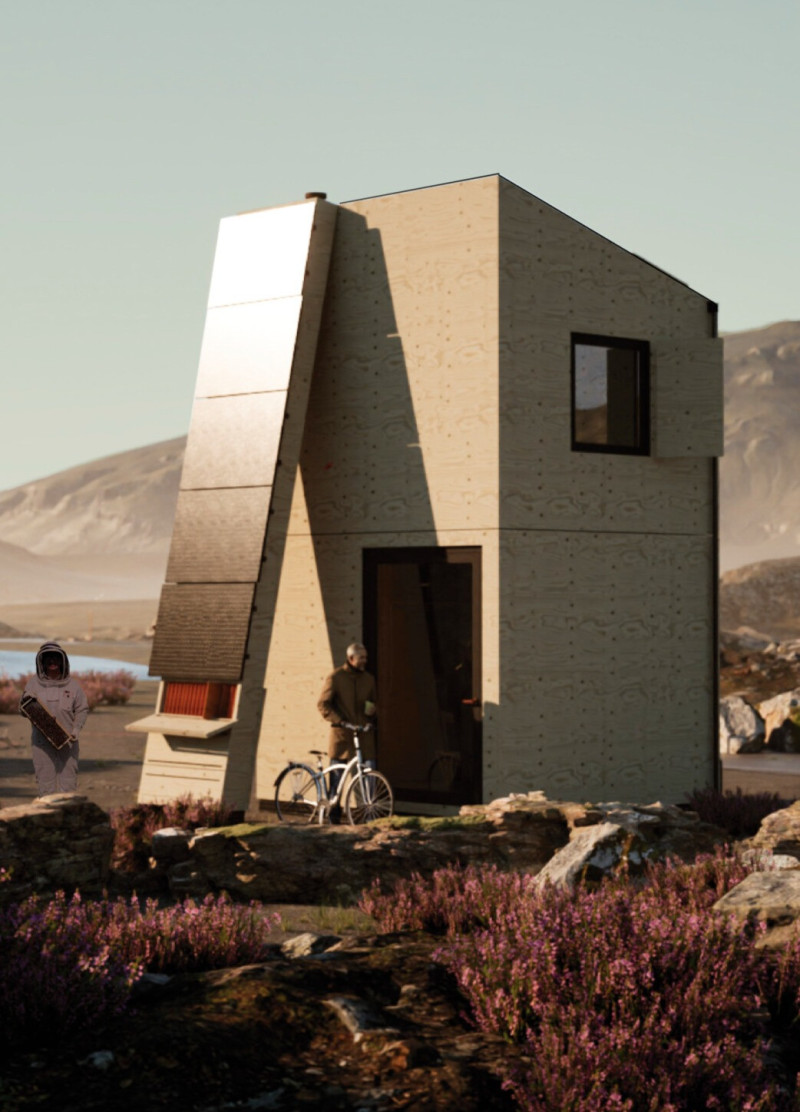5 key facts about this project
This architectural endeavor demonstrates a keen understanding of materiality, utilizing a variety of textures and finishes to create visual interest and enhance the sensory experience. High-quality materials such as concrete, glass, and wood have been employed to construct the structure, each chosen for their durability, sustainability, and ability to blend with the natural surroundings. The concrete provides a robust backbone for the design, while expansive glass elements facilitate ample natural light and offer unobstructed views of the landscape. The use of wood brings warmth and texture to the interiors, further enhancing the welcoming ambiance.
The layout of the project is both intuitive and functional, with spaces that flow effortlessly to accommodate the varied activities of daily life. Public areas are designed to invite collaboration and connection, featuring open-plan living spaces that foster interaction among users. In contrast, private spaces such as bedrooms and study areas are strategically located to ensure a degree of seclusion, thus promoting a sense of tranquility. The thoughtful arrangement of spaces reflects a commitment to user-centric design, where consideration is given to comfort and efficiency in equal measure.
Unique design approaches are evident in various aspects of the project. The interplay of light and shadow is a critical element, achieved through the careful positioning of windows and overhangs that control solar gain while providing dynamic illumination throughout the day. The integration of landscape architecture further enriches the experience, with gardens and green spaces incorporated into the design to enhance the overall aesthetic and support biodiversity. This emphasis on greenery not only contributes to the visual appeal but also underscores the project's commitment to environmental stewardship.
Moreover, the project includes innovative features such as passive solar design, which maximizes energy efficiency and minimizes environmental impact. These architectural ideas are not merely aesthetic; they illustrate a broader commitment to sustainable development, combining functionality with ecological responsibility. By prioritizing energy efficiency and sustainability, the design seeks to set a benchmark for future architectural endeavors while remaining sensitive to the needs of its inhabitants.
Attention to detail is also evident in the finishes and fixtures selected for the interiors. Every aspect, from flooring to cabinetry, has been chosen to convey a sense of coherence while allowing for individual expression through customization. This attention to detail not only enhances the overall quality of the project but also invites users to engage with their environment meaningfully.
In summary, this architectural project represents a significant contribution to contemporary design, emphasizing a strong connection between built and natural environments. Through a balanced use of materials and a thoughtful approach to layout and functionality, the project serves as a model for thoughtful living spaces that honor both individual needs and communal values. To gain further insights into this project, the reader is encouraged to explore the architectural plans, architectural sections, architectural designs, and architectural ideas presented, as they provide a deeper understanding of the vision and execution behind this exemplary endeavor.


























